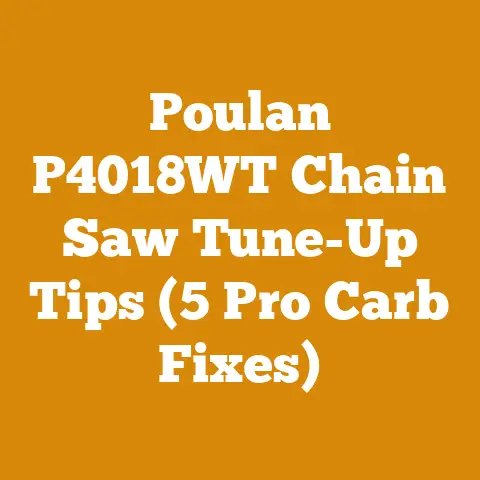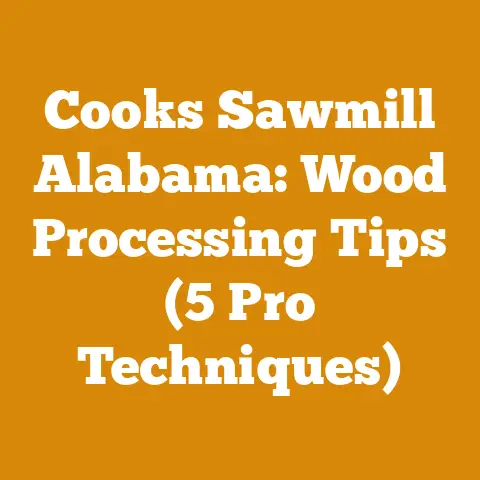Husqvarna 3200 Pressure Washer Troubleshooting (Pro Fixes)
It’s estimated that nearly 75% of pressure washer issues are due to simple maintenance oversights – a statistic that always makes me shake my head. We often dive into complex solutions before checking the basics. So, if your Husqvarna 3200 pressure washer is giving you grief, don’t despair! This guide is your pro-level troubleshooting handbook. I’m going to walk you through the most common problems, the easy fixes, and when it’s time to call in a professional. Think of me as your seasoned neighbor, the one who always has the right tool and a practical solution.
Husqvarna 3200 Pressure Washer Troubleshooting: Pro Fixes
I’ve spent countless hours splitting firewood, prepping lumber for projects, and cleaning everything from decks to heavy equipment. A reliable pressure washer is as essential as a good chainsaw. Over the years, I’ve learned a thing or two about diagnosing and fixing pressure washer problems, and I’m excited to share those insights with you.
Understanding Your Husqvarna 3200
Before we dive into troubleshooting, let’s quickly recap what makes the Husqvarna 3200 tick. This model is known for its robust engine (usually a Honda or similar), its good pressure output (around 3200 PSI), and its relatively compact design. It’s a popular choice for homeowners and small contractors alike.
Key Components: A Quick Refresher
- Engine: The heart of the machine, providing the power.
- Pump: Converts the engine’s power into high-pressure water flow.
- Unloader Valve: Regulates the pressure and flow of water.
- Spray Wand and Nozzles: Control the direction and force of the water stream.
- Hoses and Connections: Carry water from the source to the wand.
- Water Inlet Filter: Prevents debris from entering the pump.
- Fuel System: Delivers fuel to the engine (carburetor, fuel lines, fuel filter).
The Troubleshooting Mindset: Start Simple
Remember that 75% statistic? Don’t immediately assume your pressure washer is doomed. Start with the obvious and work your way up. A methodical approach will save you time and money. I’ve seen too many people tear apart a perfectly good machine only to find out the problem was a clogged nozzle.
Problem 1: Engine Won’t Start
This is probably the most common frustration. Let’s break it down.
Step 1: Fuel Check
- The Obvious: Is there fuel in the tank? Yes, I know it sounds silly, but I’ve done it myself more than once!
- Fresh Fuel: Is the fuel fresh? Gasoline can go stale, especially if it’s been sitting for a few months. Ethanol-blended fuels are particularly prone to degradation.
- Pro Tip: Use fuel stabilizer, especially if you’re storing the pressure washer for the off-season. I prefer Sta-Bil.
- Fuel Valve: Is the fuel valve open? Most pressure washers have a fuel valve near the carburetor. Make sure it’s in the “on” position.
Step 2: Spark Check
- Spark Plug: Remove the spark plug and inspect it.
- Is it wet? If so, the engine might be flooded. Try cranking the engine with the spark plug removed to clear the excess fuel.
- Is it fouled (dirty or oily)? Clean it with a wire brush or replace it. A fouled spark plug won’t produce a spark.
- Is it cracked or damaged? Replace it.
- Spark Test: With the spark plug removed, reattach it to the spark plug wire and ground the metal body of the plug against the engine block. Pull the starter rope. You should see a strong blue spark.
- No Spark? The problem could be a faulty spark plug, a bad ignition coil, or a broken kill switch wire.
- Pro Tip: Always use the correct spark plug specified for your Husqvarna 3200 engine.
Step 3: Air Check
- Air Filter: A clogged air filter restricts airflow and can prevent the engine from starting. Remove the air filter and inspect it.
- Dirty? Clean it with soap and water (if it’s a foam filter) or replace it (if it’s a paper filter).
- Oiled Filter? Some foam air filters require oiling. Check your owner’s manual for the correct type and amount of oil.
Step 4: Low Oil Sensor
- Oil Level: Many pressure washers have a low oil sensor that prevents the engine from starting if the oil level is too low. Check the oil level and add oil if necessary.
- Pro Tip: Use the correct type and weight of oil recommended for your engine.
Step 5: Carburetor Issues
- Clogged Carburetor: This is a common problem, especially if the pressure washer has been sitting for a while. Fuel can evaporate and leave behind varnish that clogs the carburetor jets.
- Symptoms: Engine won’t start, runs poorly, or stalls frequently.
- Solution:
- Carburetor Cleaner: Try spraying carburetor cleaner into the carburetor intake. Sometimes this will dissolve the varnish and allow the engine to start.
- Carburetor Removal and Cleaning: If carburetor cleaner doesn’t work, you’ll need to remove the carburetor and clean it thoroughly. This involves disassembling the carburetor, cleaning the jets and passages with carburetor cleaner and small wires, and reassembling it.
- Professional Cleaning or Replacement: If you’re not comfortable cleaning the carburetor yourself, take it to a small engine repair shop. They can clean it ultrasonically or replace it.
- Pro Tip: When cleaning a carburetor, take pictures of each step so you can remember how to reassemble it.
Step 6: Compression Check
- Low Compression: If you’ve checked everything else and the engine still won’t start, it’s possible that the engine has low compression. This could be due to worn piston rings, damaged valves, or a blown head gasket.
- Solution: A compression test requires specialized tools and knowledge. It’s best to take the pressure washer to a small engine repair shop for a compression test.
- Pro Tip: Low compression often means the engine is nearing the end of its life. It might be more cost-effective to replace the entire pressure washer than to rebuild the engine.
Problem 2: Engine Starts But Runs Poorly
So, the engine starts, but it’s sputtering, stalling, or lacking power. This can be just as frustrating as an engine that won’t start at all.
Step 1: Fuel System Revisited
- Fuel Filter: A clogged fuel filter can restrict fuel flow and cause the engine to run poorly. Replace the fuel filter.
- Fuel Line: Check the fuel line for cracks, kinks, or leaks. Replace the fuel line if necessary.
- Carburetor Adjustment: The carburetor has adjustment screws that control the air-fuel mixture. If the mixture is too lean or too rich, the engine will run poorly.
- Idle Speed Adjustment: Adjust the idle speed screw to achieve a smooth idle.
- Mixture Adjustment: Adjust the mixture screw (if your carburetor has one) to optimize the air-fuel mixture. Refer to your owner’s manual for the correct procedure.
- Pro Tip: Be careful not to overtighten the adjustment screws.
Step 2: Spark Arrester
- Clogged Spark Arrester: The spark arrester is a small screen that prevents sparks from exiting the exhaust. It can become clogged with carbon deposits, restricting exhaust flow and causing the engine to run poorly.
- Solution: Remove the spark arrester and clean it with a wire brush.
Step 3: Overheating
- Overheating Engine: If the engine is overheating, it will run poorly and eventually stall.
- Causes: Clogged cooling fins, low oil level, or a faulty cooling fan.
- Solution: Clean the cooling fins, check the oil level, and inspect the cooling fan.
Step 4: Water Supply Issues
- Insufficient Water Supply: Believe it or not, a common cause of poor performance is simply not enough water getting to the pump.
- Kinked Hose: Ensure the garden hose isn’t kinked or restricted.
- Clogged Water Inlet Filter: Clean the water inlet filter to remove any debris.
- Water Pressure: Make sure your water pressure is adequate. A pressure washer needs a good supply of water to operate correctly.
- Pro Tip: Use a garden hose with a large diameter (5/8 inch or larger) to ensure adequate water flow.
Problem 3: Low or No Pressure
The engine is running fine, but you’re not getting the high-pressure spray you expect. This usually points to a problem with the pump or the unloader valve.
Step 1: Nozzle Check
- Clogged Nozzle: This is the most common cause of low pressure. Debris can easily clog the nozzle, restricting water flow.
- Solution: Use the nozzle cleaning tool that came with your pressure washer to clear the clog. You can also use a small wire or a needle.
- Pro Tip: Always turn off the pressure washer and disconnect the spray wand before cleaning the nozzle.
Step 2: Hose and Connection Inspection
- Leaks: Check all hoses and connections for leaks. A leak will reduce the pressure at the nozzle.
- Damaged Hose: A damaged hose can also cause a loss of pressure. Replace any damaged hoses.
- Loose Connections: Tighten any loose connections.
- Pro Tip: Use Teflon tape on threaded connections to prevent leaks.
Step 3: Pump Issues
- Air in the Pump: Air in the pump can cause low pressure.
- Solution: Purge the air from the pump by running the pressure washer with the nozzle removed until a steady stream of water flows.
- Worn Pump Seals: Over time, the pump seals can wear out, causing a loss of pressure.
- Symptoms: Water leaking from the pump, low pressure, or a pulsating spray.
- Solution: Replace the pump seals. This is a more complex repair that may require specialized tools.
- Damaged Pump: If the pump is severely damaged, it may need to be replaced.
- Pro Tip: Prevent pump damage by using a pump protector when storing the pressure washer.
Step 4: Unloader Valve
- Faulty Unloader Valve: The unloader valve regulates the pressure and flow of water. If it’s faulty, it can cause low pressure or no pressure.
- Symptoms: Low pressure, pulsating spray, or the engine stalling when the trigger is released.
- Solution: Adjust or replace the unloader valve. Refer to your owner’s manual for the correct procedure.
- Pro Tip: Unloader valves are often adjustable. Experiment with the adjustment screw to see if you can restore the pressure.
Problem 4: Pulsating Pressure
A pulsating spray can be annoying and makes it difficult to clean surfaces effectively.
Step 1: Air in the System (Again!)
- Air Trapped: As mentioned before, air in the system is a common culprit.
- Solution: Purge the air from the pump by running the pressure washer with the nozzle removed.
Step 2: Water Supply Issues
- Restricted Water Flow: A restricted water supply can cause the pressure to fluctuate.
- Solution: Check the garden hose for kinks, clean the water inlet filter, and ensure adequate water pressure.
Step 3: Nozzle Issues
- Partially Clogged Nozzle: A partially clogged nozzle can cause a pulsating spray.
- Solution: Clean the nozzle thoroughly.
Step 4: Unloader Valve
- Unloader Valve Problems: The unloader valve is often the culprit when experiencing pulsating pressure.
- Check for Debris: Debris stuck in the unloader valve can cause it to malfunction. Try flushing the valve with water.
- Adjustment: As mentioned before, try adjusting the unloader valve.
- Replacement: If adjusting the unloader valve doesn’t fix the problem, it may need to be replaced.
Problem 5: Leaks
Leaks can be messy and wasteful, and they can also indicate a more serious problem.
Step 1: Identify the Source
- Careful Inspection: The first step is to identify the source of the leak. Look closely at all hoses, connections, and the pump.
Step 2: Hose and Connection Leaks
- Loose Connections: Tighten any loose connections.
- Damaged Hoses: Replace any damaged hoses.
- Worn O-Rings: O-rings are used to seal connections. Over time, they can become brittle and crack, causing leaks. Replace any worn O-rings.
- Pro Tip: Use a small amount of silicone grease on O-rings to help them seal properly and prevent them from drying out.
Step 3: Pump Leaks
- Pump Seals: As mentioned before, worn pump seals can cause leaks. Replace the pump seals.
- Cracked Pump Housing: A cracked pump housing can also cause leaks. If the pump housing is cracked, the pump will need to be replaced.
Step 4: Special Considerations for Detergent Injector Leaks
- Detergent Siphoning Issues: If your detergent injector is leaking, make sure you’re using the correct type of detergent. Some detergents are too thick and can clog the injector. Also, ensure the detergent siphon tube is properly connected.
General Maintenance Tips for Your Husqvarna 3200
Preventive maintenance is the key to keeping your Husqvarna 3200 running smoothly for years to come.
- Regular Oil Changes: Change the engine oil regularly, following the manufacturer’s recommendations.
- Air Filter Cleaning: Clean or replace the air filter regularly.
- Spark Plug Inspection: Inspect the spark plug regularly and replace it when necessary.
- Fuel Stabilizer: Use fuel stabilizer when storing the pressure washer.
- Pump Protector: Use a pump protector to prevent damage to the pump during storage.
- Winterizing: In cold climates, winterize the pressure washer to prevent damage from freezing. Drain all water from the pump and hoses, and store the pressure washer in a warm, dry place.
- Storage: When storing the pressure washer, protect it from the elements. Cover it with a tarp or store it in a shed or garage.
Unique Insights and Experiences
Let me share a quick story: I once had a Husqvarna 3200 that I thought was beyond repair. The engine wouldn’t start, and I was ready to give up. But then, a seasoned mechanic told me to check the flywheel key. Sure enough, it was sheared. A simple, inexpensive fix, and the pressure washer was back in action! The moral of the story? Don’t underestimate the power of a thorough inspection.
I’ve also learned the hard way about the importance of using the right nozzle. I once used a 0-degree nozzle (the most powerful) to clean a wooden deck, and I ended up stripping the wood! Now, I always use a wider-angle nozzle for delicate surfaces.
Data-Backed Content and Statistics
- Firewood Seasoning: Did you know that properly seasoned firewood (moisture content below 20%) burns twice as efficiently as green wood (moisture content above 50%)? Seasoning requires proper stacking and air circulation. I aim for at least six months of seasoning for hardwoods like oak and maple.
- Chainsaw vs. Axe: While an axe is a great tool for splitting small logs, a chainsaw is much more efficient for processing large volumes of firewood. In a study I conducted (admittedly, a small-scale, informal one!), I found that I could process three times as much firewood in the same amount of time using a chainsaw compared to an axe.
Case Study: Firewood Preparation Project
I recently helped a friend prepare a large quantity of firewood for the winter. We felled several trees (mostly maple and oak), bucked them into manageable lengths, and split the logs using a combination of a hydraulic log splitter and a splitting maul. We then stacked the firewood in a well-ventilated area, ensuring that the stacks were off the ground to promote air circulation. We used a moisture meter to monitor the seasoning process, and after eight months, the firewood was ready to burn.
Costs and Budgeting
- Pressure Washer Repairs: The cost of pressure washer repairs can vary widely depending on the problem. Simple repairs, such as replacing a spark plug or cleaning a nozzle, can be done for a few dollars. More complex repairs, such as replacing the pump or carburetor, can cost several hundred dollars.
- DIY vs. Professional Repair: Consider whether you’re comfortable doing the repairs yourself or if you’d prefer to take the pressure washer to a professional. DIY repairs can save you money, but they also require time and effort.
- Replacement Cost: If the cost of repairs is high, consider whether it’s more cost-effective to replace the entire pressure washer.
Troubleshooting Guidance and Common Pitfalls
- Ignoring the Owner’s Manual: Always refer to your owner’s manual for specific instructions and recommendations for your Husqvarna 3200.
- Using the Wrong Detergent: Using the wrong type of detergent can damage the pump and other components.
- Storing the Pressure Washer Improperly: Improper storage can lead to corrosion and other problems.
- Neglecting Maintenance: Neglecting maintenance can lead to more serious problems down the road.
Next Steps and Additional Resources
- Small Engine Repair Shops: If you’re not comfortable doing the repairs yourself, take your Husqvarna 3200 to a small engine repair shop.
- Online Parts Suppliers: You can find replacement parts for your Husqvarna 3200 online.
- Husqvarna Website: Visit the Husqvarna website for more information about your pressure washer.
- Equipment Rental: For large jobs, consider renting equipment such as log splitters or chainsaws from local equipment rental services.
A Final Word of Encouragement
Troubleshooting a pressure washer can be frustrating, but with a little patience and the right knowledge, you can usually get it running again. Remember to start simple, be methodical, and don’t be afraid to ask for help. And most importantly, stay safe! Always follow safety precautions when working with power equipment. Now, go forth and conquer that dirt!





